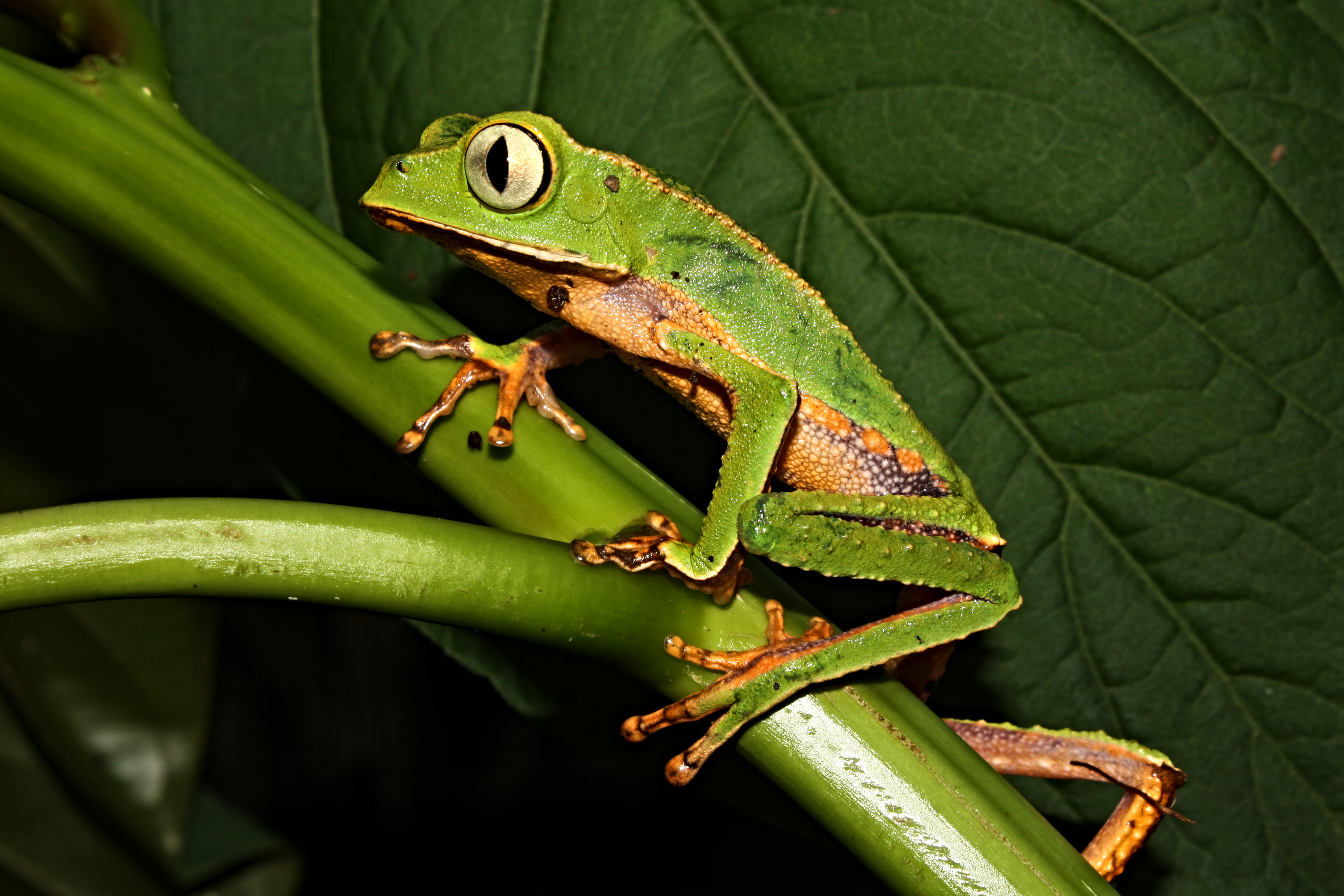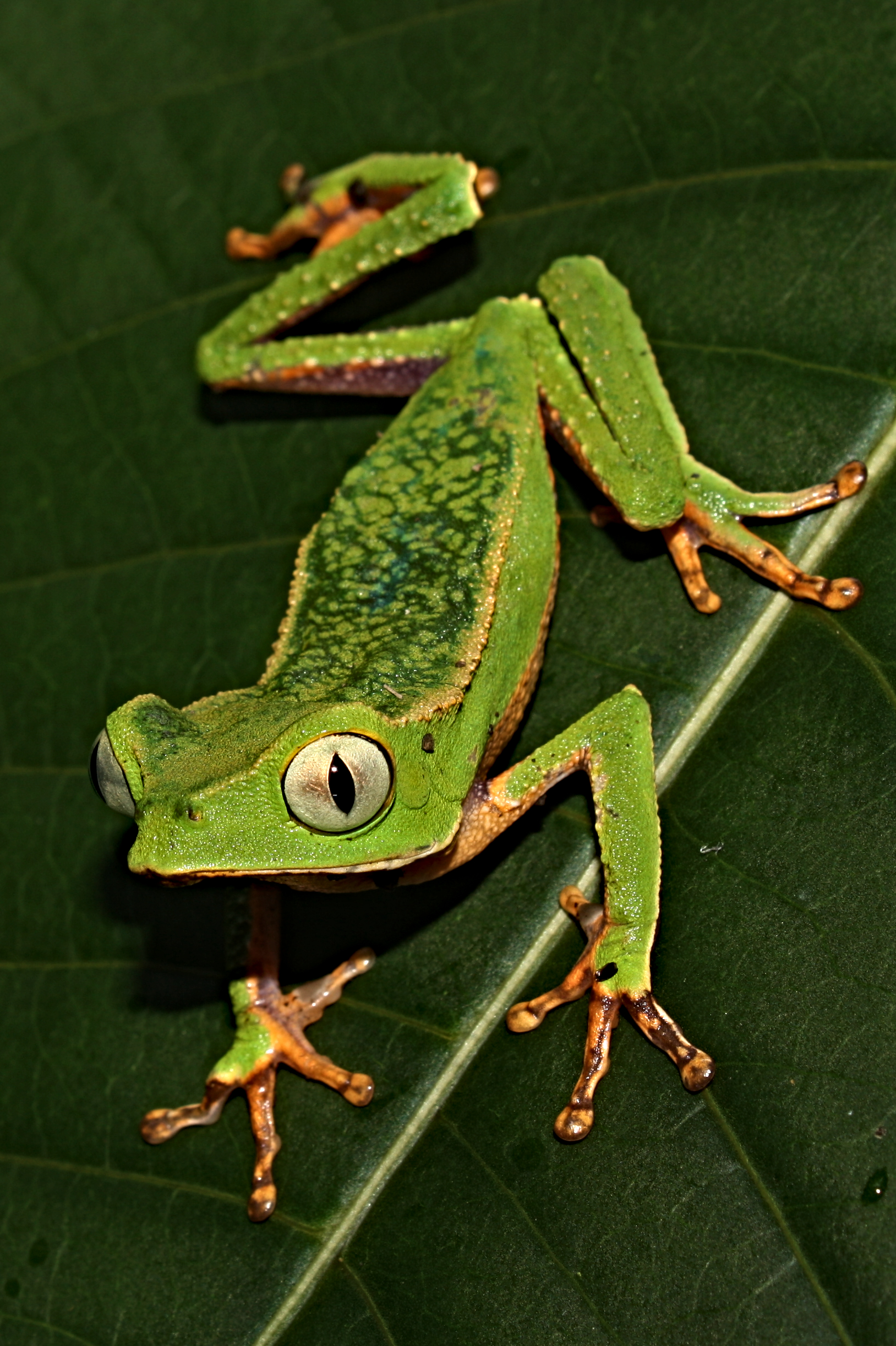Despite this being the Tales of Scales, I’m going to allow the amphibians to join the party and feature alongside the reptiles. I’m hoping that through this act of kindness I will be blessed by the amphibious gods with easy identification of novel species when I’m back in Ecuador. This will be welcomed as thumbing through a soggy, out-of-date field guide at midnight in a mosquito swarm is almost at the point where I’m not having fun…
The white lined monkey frog (Phyllomedusa vaillantii) is distributed widely throughout northern South America, in the Amazon basin and the Guyanas. At night it is often found between 1 and 4m above the ground in trees and shrubs, exactly where I found this one below.

The monkey frogs are so named because of the way they move. Different to most frogs, which typically jump or hop, this species, and the others in the Phyllomedusa genus, walk with big exaggerated movements that seem to go in slow motion.

Interestingly, the skin secretions of this species have been found to show potent insecticidal properties. A study found that the LC50 (concentration required to kill 50% of the sample) of crude white-lined monkey frog skin secretion was 2.1 parts per million for adult Anopheles darlingi, a malaria carrying mosquito in the Neotropics. To put that into context, 2.1ppm is equivalent to having 0.0021ml of frog secretion in a 1L jug of water. Potent stuff.

Additionally, skin secretions from other frogs in the Phyllomedusa genus have been shown to be effective against the various parasites, including those responsible for diseases such as leishmaniasis and malaria. The complex ways these chemicals interact with parasites means it’s harder to evolve resistance to them. This is very important as we enter a time when increases in antibiotic resistance bacteria, among other things, are a real threat to modern society. These studies highlight just how useful these humble amphibians can be, and why it’s important to protect them now in case we need them in the future!
Maybe next time I’m looking through the ID guide I’ll keep a couple of monkey frogs handy to make sure the mosquitoes are kept at bay!
Quick facts
- Found throughout rainforests of the northern part of South America.
- Named ‘monkey frog’ due to its bizarre walking motion.
- Has insecticidal proteins in the skin which have been shown to kill adult and larval mosquitoes.
Further reading:
- Trindade, F. T., Soares, Â. A., de Moura, A. A., Rego, T. B., Soares, A. M., Stábeli, R. G., … & e Silva, A. D. A. (2014). Insecticidal activity of Leptodactylus knudseni and Phyllomedusa vaillantii crude skin secretions against the mosquitoes Anopheles darlingi and Aedes aegypti. Journal of Venomous Animals and Toxins including Tropical Diseases, 20(1), 28.
- This paper describes the insecticidal effects of the Phyllomedusa skin secretions as well as that of another frog species from the amazon. They tested the effects on adults and larvae of two species of mosquito and highlight how much we don’t know about potential medical uses from amphibian skin secretions.
- Calderon, L. D. A., Silva-Jardim, I., Zuliani, J. P., Ciancaglini, P., Silva, L. H. P. D., & Stábeli, R. G. (2009). Amazonian biodiversity: a view of drug development for leishmaniasis and malaria. Journal of the Brazilian Chemical Society, 20(6), 1011-1023.
- This paper talks about tropical diseases, particularly malaria and leishmaniasis, and how plants and animals have been used to treat them. There are some examples of traditional medicines too. They end by highlighting the importance of searching the amazon for novel treatments to disease.